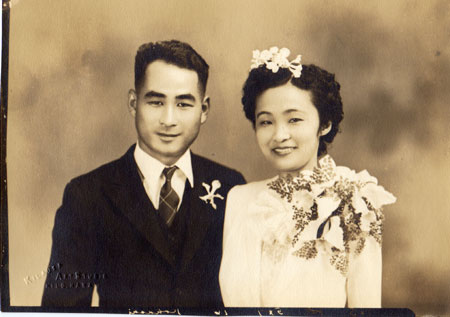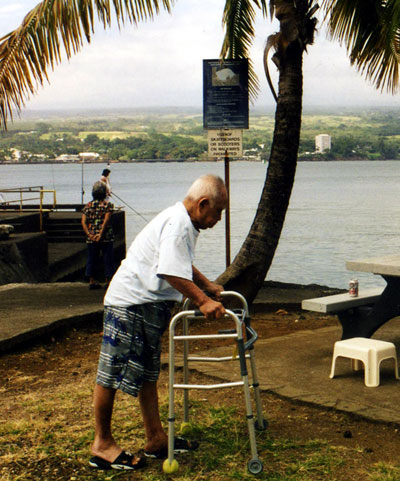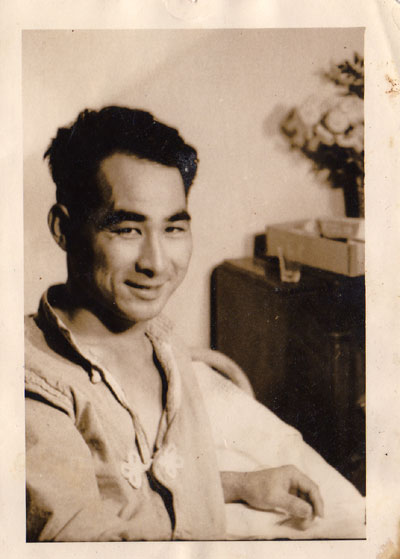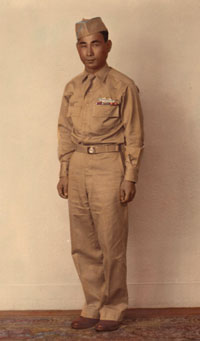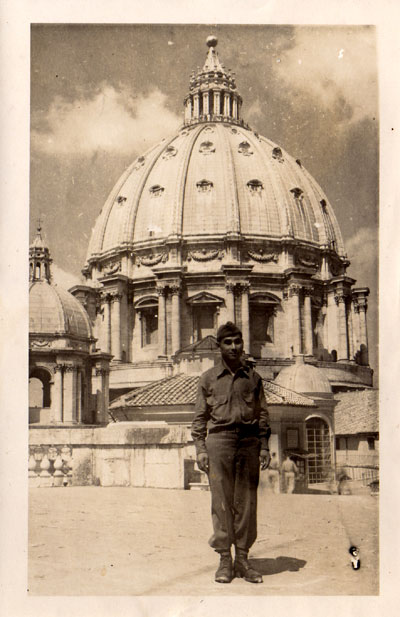
Almost every store along the stretch of Coney Island Avenue that runs through Midwood is Pakistani. From the Khoobsurat Beauty Salon for women, to the K. Prince Barber Shop for men. Then comes Zoha Money Transmitter, where you can exchange your Pakistani rupees for U.S. dollars or vice versa. Subhan Sweets and Tikka Restaurant is a good place to buy a cup of freshly brewed, milky, cardamom-flavored chai but not coffee.
The first sentences Ayesha ever typed into a computer were: “My name is Ayesha ayobe. I am 21 age.”
Over time, in bits and pieces, she told me more about herself:
“I come from Lahore, Pakistan one year.”
“My father work in chicken burger restaurant. My mother no work.”
“My brother Abdul 17 work in grocery store. My next brother Mohammad is 13 age in sixth grade. My next brother Usama is 5 age. He stay home with my mother.”
“My sister Aleena 16 no go school.”
“I no want to marry. No shaadi; single good!”
“I like America.”
There are Muslim women who come to America, live here for years, raise children and grandchildren, and never learn more than a few words of English. There are Muslim women who end up knowing no other woman (let alone man) in this country who is not a family friend or relative. I met Ayesha when I was looking for these women.
At first, I assumed Ayesha satisfied all of my easy categorizations about Muslim women. I saw her as representative of the many young Muslim women who come to America in their late teens and early 20s, too old to enroll in public school and be introduced, through American classmates and teachers, to American ways of life. As a result, they remain trapped at home, waiting to be married off by their families.
I eventually learned that Ayesha was not the stereotypical Muslim woman I had imagined: veiled, docile, and submissive. She clandestinely rebelled against the restrictive world her parents wanted her to live in, making secret forays to the life outside. That is why I have changed her name and those of others in her story: to protect Ayesha from the repercussions that will undoubtedly follow if the truth were to get out within her orthodox community.
But Ayesha also rebelled against the walls that I tried setting up around her, in my attempt to maintain a “proper” reporter/subject distance. And that is why I am no longer in contact with her.
“You are my best friend!”
I met Ayesha at her very first computer class, held on a cold February day at an immigrant outreach organization in the Midwood stretch of Brooklyn. Three times a week, half a dozen women in headscarves — some recently arrived from Pakistan, others from Bangladesh, Yemen and Morocco — turned up at the organization’s office to learn basic computer skills.
At the start of that first class, the instructor asked his all-female, all-non-English-speaking, all-Muslim audience to log into their computers by typing in the password, OPTO. Ayesha didn’t know what a password was so she just sat in her place: a short, stocky, square-jawed woman dressed in a beige headscarf and faux leopard fur coat. Sitting behind Ayesha, I sensed her confusion and told her in English that she needed to type out the word “OPTO” into the computer.
She didn’t move and continued to stare at the computer screen in front of her.
I told her roughly the same thing in Hindi. “Computer meh O-P-T-O likho,” and then she got it.
Once logged on, Ayesha turned around in her seat and told me in Urdu that she was “bahooth khushi,” very happy, to have met me.
Later that same day, she told me, “Aap tho mera best friend hai!” You are my best friend!
“I am go to school.”
Besides studying the computer, Ayesha also took English as a Second Language classes at the community center. During her ESL lessons, Ayesha was always volunteering to read out loud or answer a question, and she completed the simple in-class exercises with only minimal mistakes.
“Make sentences with the words car, bird and school,” the instructor would write on the chalkboard.
And Ayesha would write:
“I have car.”
“I like a bird.”
“I am go to school.”
Ayesha was, in fact, one of the better students. Unlike the other women in her class, Ayesha had studied until 12th grade in Lahore and had learned to read and write a modicum of English.
With computers — because she didn’t have one at home, had never used one — Ayesha was more diffident. But she was also impatient to learn more. (All the women were.) She became angry with herself whenever she made a mistake. She would go, “Oh!” in frustration and smack her forehead with the palm of her hand or rest her head on the top of the keyboard. And whenever she got fed up, she had no qualms saying so to the instructor. She’d switch off her computer monitor, stand up, and announce simply, “I go.”
When she wasn’t in class, Ayesha would be busy with household chores and other tasks. “This weekend, I am cooking, I go to shopping at Bobby’s Store, I go to work,” she would say when asked to list her weekend activities.
Ayesha’s work involved conducting Quran classes in the homes of many of the Pakistani women in the neighborhood. Last time I checked, she had seven students. Other days, she would visit her friend Sana’s apartment on Newkirk Avenue.
Within a week of knowing her, I decided that Ayesha’s was the story I wanted to write.
I started actively courting her in order to ingratiate myself into her good books. I played down my Indian roots in case she was an India-bashing Pakistani nationalist. I didn’t mention that I was Christian. I brushed up on my Hindi. I taught her how to use the Shift and Backspace keys on the computer. I translated unfamiliar English words into Urdu for her.
It was hard not to admire Ayesha’s determination to ease what was surely a difficult adjusting process coming from Pakistan to the United States, and I wanted to help wherever I could.
I had gone through a similar ordeal when, at the age of five, I had left India with my family to move to Scotland. My older sister and I were the only Indians in our all-white Edinburgh public school. My sister, who already knew some English, had thrived; I, who could not speak a word of English, had been terrified. Not knowing how to handle a knife and fork in the school canteen, being teased by older students in the girls’ toilet, getting lost inside the school and being too afraid to ask for directions: everything was a nightmare.
As a fellow immigrant, I wanted to help Ayesha and if doing so meant that I was simultaneously helping myself get a story out of her, so much the better. It meant that my disinterested reporter status would be eroded slightly as I became chummier with Ayesha but I thought I had our relationship under control.
The following week in the middle of computer class, Ayesha turned around and told me, “Today, you come my house.”

Ayesha loves watching Bollywood flicks. Her current favorite movie is Raaz, a psychological thriller that also includes some steamy song-and-dance routines between the hero and heroine.
“There’s a special word: fob.”
To reach Ayesha’s apartment building from the community center, you have to travel a few bus stops up Coney Island Avenue.
Inside bus B68, it was standing room only. Russian grandmothers holding tight to their shopping bags brushed shoulders with Chinese mothers carrying infants on their laps. Together with old Hispanic men and one young Hasidic man, they occupied the seats in front. The back of the bus was filled with African American schoolchildren chatting and laughing loudly.
Ayesha, her younger sister Aleena, and I were the only South Asians onboard. We stood in the aisle — the surreptitious focus of 20 pairs of eyes — and I wondered if everyone assumed I was Muslim the way Ayesha and Aleena in their headscarves obviously were. I felt the urge to distance myself from the two girls.
The truth? Ayesha embarrassed me. Not because of her religion or her nationality but because of her lack of fashion sense.
In my interviews with first- and second-generation immigrant children in Midwood, time and again, the isolation a newcomer child faces when he has not yet learned how to blend into mainstream culture was raised. The teasing comes not just from white or black kids but also from other immigrant children. “There’s a special word people use: fob,” Reshmi Nair, the American-born daughter of Indian immigrant parents, explained to me. A fob was someone “fresh off the boat”, an outsider, not yet “with it”, and therefore very uncool.
Assimilation — the goal of any child who wants a peaceful school experience — meant dressing a particular way, speaking a particular way, knowing what to talk about. I’d learnt that lesson the hard way in Scotland and I’d spent the years since making sure I would never be identified as an outsider again.
Then along comes Ayesha with her monstrous leopard fur coat, her lack of English conversation, and her lack of New Yorker disaffection on public transportation, screaming out her fob status. As a topic she fascinated me, but as a person, she was not someone I wanted to be associated with. I had reverted to a high school hierarchy where the “cool” kids did not want to mix with the “uncool” kids.
And why did Ayesha want to associate with me? Was it really just a simple case of friendship-at-first-sight? Or did she too subscribe to the same high school mentality where, by hanging out with ‘cool’ me and my designer wool coat, she would become more like me?
“In Pakistan, it is very dirty.”
Ayesha’s apartment was in a brick-fronted building that fronted Coney Island Avenue. We entered a dimly lit hallway that had paint-splattered walls and empty paint cans abandoned by the chipped wooden staircase. What little light there was in the corridor managed to come through dirt-encased windows in the stairwell. There was dust everywhere.
The girls’ home on the second floor was tiny for a family of seven. The front door opened into the central kitchen-cum-dining-cum-living room from which two bedrooms led off. Queen-size mattresses rested on the floors of both bedrooms and in the corner of the living room. One of the bedroom mattresses was for the parents and the youngest son Usama, another for the two girls, and the living room mattress for the two older boys. Clothes hung on twine strung across one of the bedrooms.
An English language textbook in Urdu was sitting on the dining table when I entered. (I learned later that Ayesha’s mother used it to teach herself English.) In a glass-fronted cupboard against a wall, various mismatched plates and crockery were stacked. Inside, I spotted a set of Corelle plates. The ones with the brown butterfly motif around the edge. The same ones my mother has back in India. Every upper middle class Indian housewife, who has visited the United States or has relatives here, owns at least one of these Corelle plates. Did the same rule apply to Pakistani housewives, I wondered. If yes, then this would mean that back in Pakistan, Ayesha’s mother would now be considered middle class.
I asked Ayesha’s mother if she liked the United States and she nodded her head vigorously.
“Pakistan meh, bahooth gundhi hai,” she said. In Pakistan, it is very dirty.
Recalling India’s slums and could understand why a person would want to escape that life. Ayesha’s Brooklyn apartment, while overcrowded and ramshackle, was at least clean.
With familiar South Asian hospitality, Ayesha’s mother insisted that I sit down and do nothing while she and her daughters prepared lunch. A Danish butter cookie tin filled with dough and another tin of wheat flour appeared and she started to roll flat the dough into chapattis, the round wheaten bread common to Pakistan and North India. Ayesha cooked the bread over an open flame on the stove and when they were done, stacked them onto a plate and rubbed butter on them. Leftover curries — channa (chickpea), vegetable-and-potato, and beef — from the day before were heated up in the microwave. The curries joined a plate of cucumber slices sprinkled with lemon juice, and a bottle of mango pickle.
As the food was being prepared, I played with Ayesha’s brother, Usama, still in his pajamas at 1:30 p.m. Usama wordlessly showed me his plastic lizard, his helicopter with only one of its blades remaining, and his rubber monster mask. He showed me photos from his last birthday, his first in the United States. The photos had been taken in the apartment and showed Usama and his family, all dressed up in their finest, standing stiffly before the camera, all slightly out of focus and misaligned.
“Why doesn’t Aleena go to school, Aunty?”
Ayesha had removed her coat and sweater, as soon as she stepped into the apartment, losing bulk as she did so. Next she removed her headscarf, letting her hair loose. It was a shock to see Ayesha’s hair, so long that the ends brushed the top of her wide hips. And her face, now that it was no longer framed by her scarf, looked softer and less masculine.
Everything about Ayesha changed once she was home. All her hesitation dropped away and her oldest-child confidence came rushing to the fore. As she spoke to her mother about her day, her voice took on the assurance that comes from talking in your mother tongue to someone who understands you completely. There was even a hint of bossiness in her tone as she ordered her sister Aleena to wash the dishes and lay the table.
Aleena was as shy and withdrawn inside the apartment as she was outside. She hardly spoke, whether in English or Urdu. She could write “My name is Aleena” on her own. They were about the only English words she seemed to know. She once wrote in my notebook – “im 16 years olD. I live in BrooKLyn.” – but only after I spelt out each word for her. In ESL class, she never completed (let alone understood) any of the exercises she was assigned; her sister did them for her when the teacher wasn’t looking.
I had once asked Aleena if she wanted to attend school in America but she shook her head, whispered no, and smiled guiltily at me.
In the apartment, I broached the topic once more.
“Why isn’t Aleena going to school, Aunty?” I asked the girls’ mother in Hindi, fully expecting a harangue against the loose morals fostered by the American public school system. And what use would an education be for a girl who was going to become a housewife anyway? But she nodded her head vigorously at my question and replied that yes, Aleena should be going to school but didn’t want to.
Aleena smiled guiltily once again. Suddenly, the situation seemed more about a young girl frightened by the prospect of change, rather than overbearing parents refusing to give their daughter the benefit of an education.
Ayesha added that it was difficult to talk to the school officials and asked if I would go with her to the school one day.
For a split second I hesitated, worried once again about journalistic detachment and the dangers of getting too involved with my subject. But then I said, yes, of course I’d go.

Ayesha’s new computer takes pride of place in the central kitchen-cum-dining-cum-living-cum-bedroom. Each month, as the family makes a little bit more money, new appliances fill up the apartment: a blender, a DVD player, a printer.
“Why you no come COPO?”
That was when the tide started to turn. From my shadowing Ayesha, it became Ayesha hounding me. It was no longer clear who had chosen whom, and who was the project.
When I didn’t show up for ESL or computer class, Ayesha would call me on my cell phone to ask what had happened.
Over weekends, she would call me using her boyfriend Yusof’s cell phone. Yusof, a 20-something Pakistani janitor working in Manhattan, was Ayesha’s third boyfriend. She would tell her mother that she was going to work, then met up with Yusof instead. Sometimes he would take her on the Q to downtown Manhattan for an afternoon in the city.
Ayesha would call to tell me that she was in Manhattan with Yusof. There was an unspoken suggestion that I should meet up with the two of them. We never did but I knew that if I continued to visit her in Brooklyn, it would only be a matter of time before I would have to invite her to my Greenwich Village apartment in return. Then Ayesha would have gained entree into my world.
A few weeks later, Ayesha called me again to tell me that her family had bought a computer and asked for help setting it up. Unfortunately their “new” computer turned out to be not so new and had no accompanying software or dial-up service. But Ayesha wanted to email. Email Yusof, I imagined. I explained what she would need to do before that could happen.
Then Ayesha asked if I could help her sixth-grader brother with his homework. So I stayed a while longer, going through Mohammad’s assignments with him. As I finally prepared to leave, Ayesha asked me to come again soon to have tea with her family. I couldn’t say no.
Somehow or other, Ayesha had taken over our reporter-subject relationship and revised the terms of our engagement. She had made herself a fixture in my life rather than a once-a-week anthropological experiment. She wanted me to become her computer technician, interpreter of official letters, Manhattan tour guide, and teacher. As she’d said from the beginning: her best friend.
I started avoiding her calls. When she did catch me unawares, I made up excuses as to why I was no longer attending the computer and ESL classes or visiting her home.
Yusof started calling me too, even when Ayesha wasn’t with him. I avoided his calls as well. When he finally got through, he told me that he and Ayesha were no longer an item. She had been double-dating and he had broken up with her as a result.
The next time I talked with Ayesha, I learnt that her new boyfriend (of a month) was the owner of a CD shop in Midwood, a 30-something Pakistani named Firoz. Firoz was a catch but once again, her parents didn’t know about her latest boyfriend. When her parents went out, leaving Ayesha at home alone, she would sneak Firoz into the apartment. She gave Firoz my cell phone number and had him call me from his shop, inviting me to come over for free CDs. I pleaded overwork and lack of time to avoid going down.
Eventually, Ayesha got the message and stopped calling.
Looking back now, I understand that Ayesha was trying to use me to reach out and grab at her version of American life: freedom, fun, learning, and independence. To me, living in America meant looking like an American. But for all my designer clothes, I think Ayesha’s idea of America was better than mine.
STORY INDEX
ORGANIZATIONS >
South Asian Women’s Organizations in the United States
URL:http://www.sawnet.org/orgns/#Pakistan
Anju Mary Paul
Dear Reader,
In The Fray is a nonprofit staffed by volunteers. If you liked this piece, could you
please donate $10? If you want to help, you can also:

















